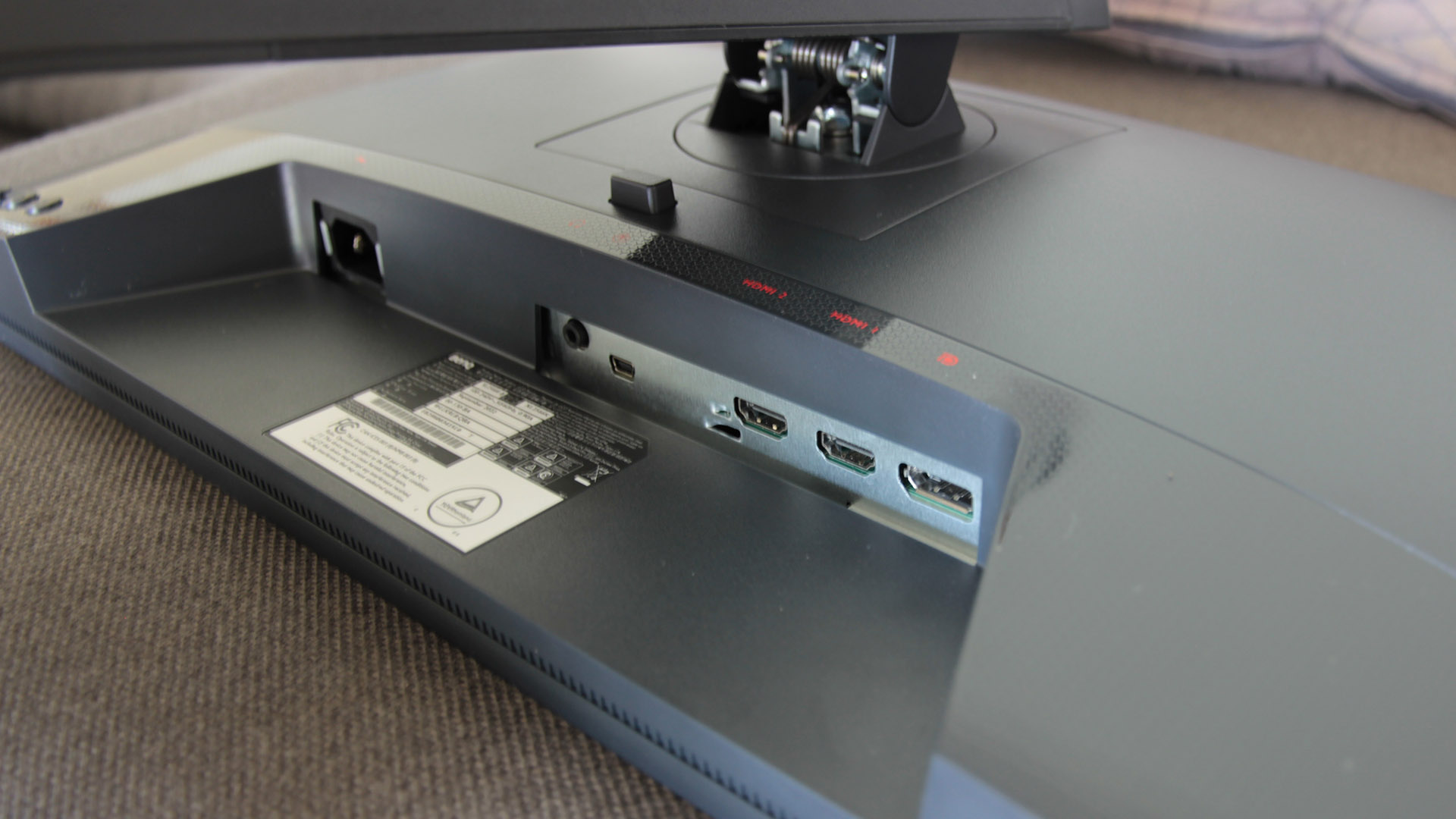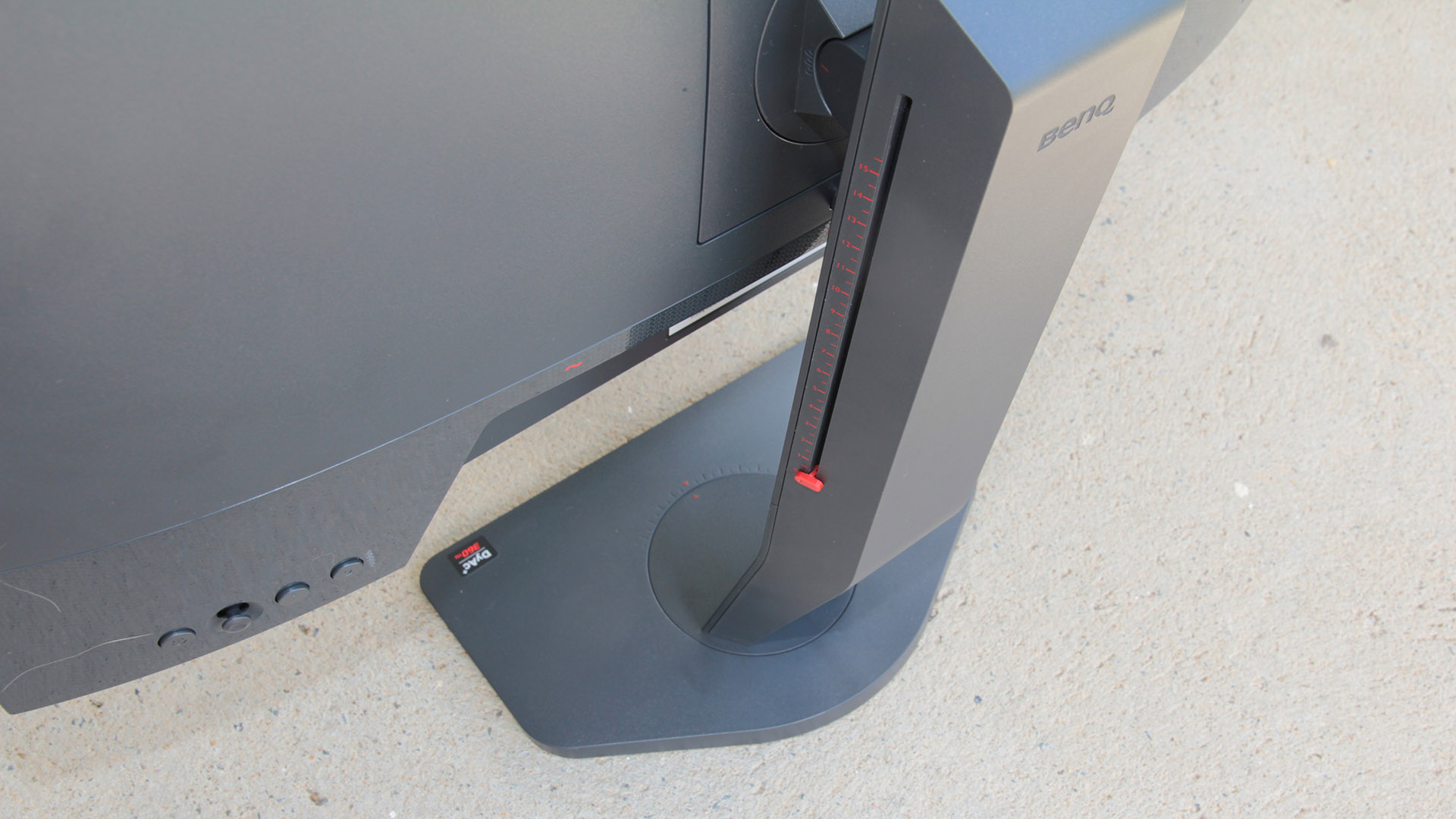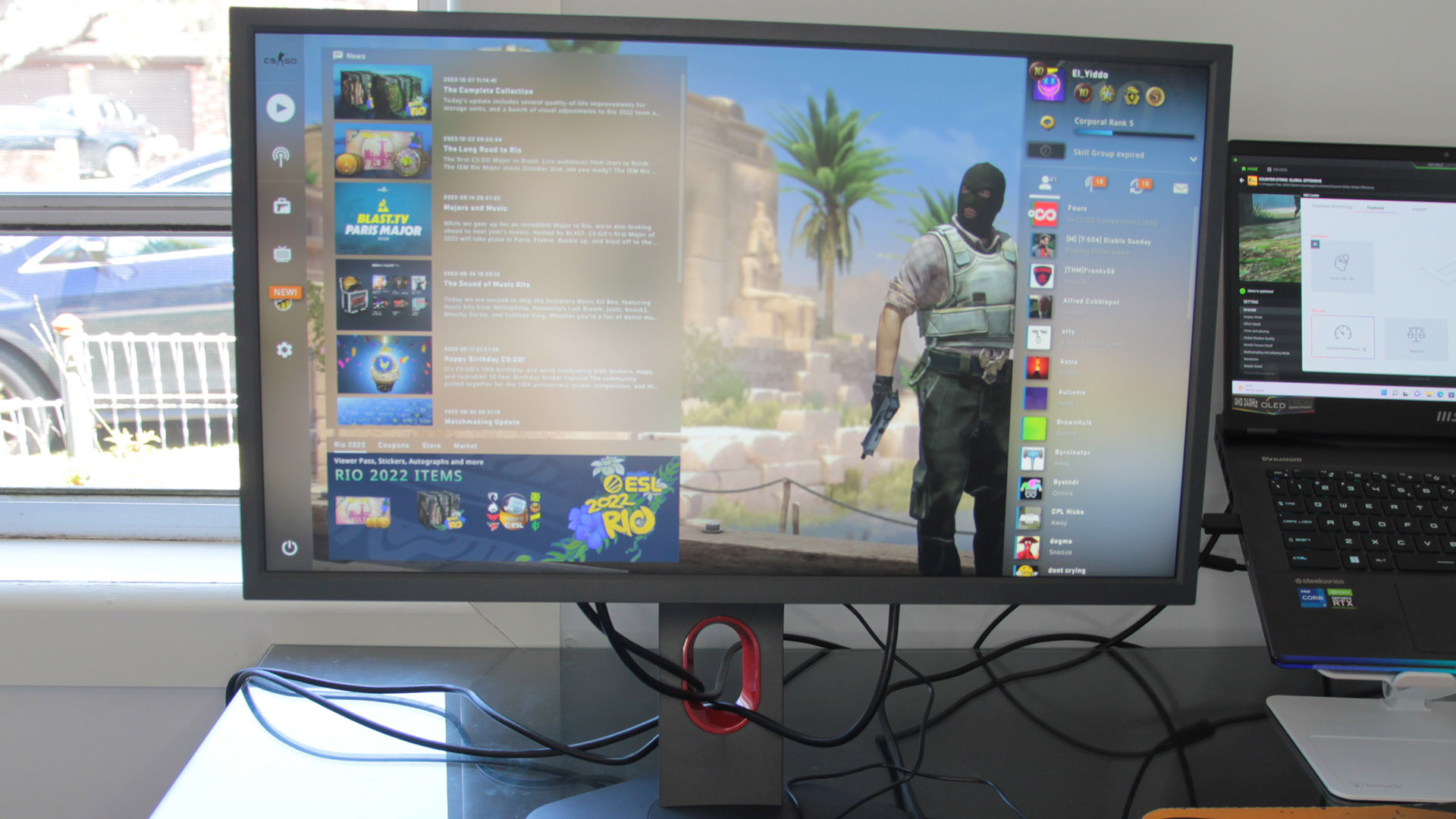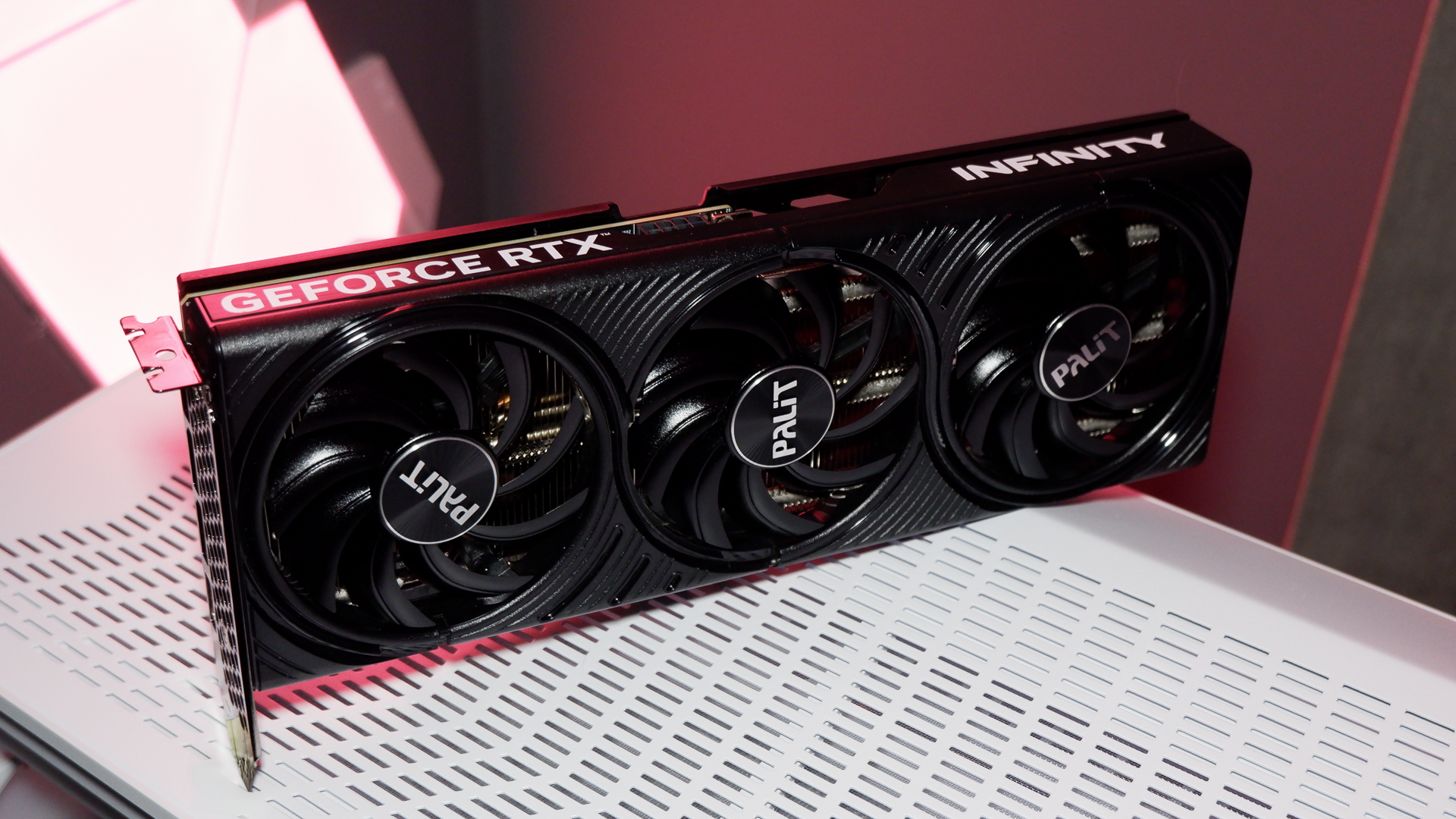Our Verdict
It feels weird to recommend such an expensive, old-school gaming monitor with characteristics that trail far behind most rivals, but here we are. If you’re searching for a screen that can best keep up with your tournament-tuned twitch reflexes, this is what to buy. Other gamers are served better elsewhere.
For
- The very fastest pixel response
- 360Hz refresh rate
- Backlight strobing
Against
- Poor viewing angles
- Mediocre colours and contrast
- No HDMI 2.1
PC Gamer's got your back
In many ways, professional FPS players are a different breed to other competitive gamers in the way that racing car drivers are different to motoring enthusiasts. When it comes to picking the best gaming monitor for pro use, creature comforts, aesthetics and immersion all come second to the demand for speed. The BenQ Zowie XL2566K has been designed exclusively for this type of gamer. And the company has thrown in some thoughtful bells and whistles too.
The 1080p XL2566K comes from BenQ’s ‘Zowie’ skunkworks team, whose continuing mission is to build the ultimate monitor for players of a 10-year-old game, using panel technology that the industry has considered moribund for even longer. It’s literally to give players of CS:GO (and its derivative, tournament-grade shooters like Overwatch, Apex Legends, Valorant and Rainbow Six) every possible edge—or at least remove every potential limitation—in matches where more-than-bragging-rights are at stake. That’s it.
Vibrant, accurate colours? Ugh, no. Infinite contrast? Take it away! HDR lighting effects? [claws out eyes] 4K res for super-realistic details? Matron! RGB lighting? [picks up hammer] The core consideration here is pixel response time.
Some may be wondering why we’ve yet to mention this screen's 360Hz refresh rate—after all, it’s a major selling point. However, as we’ve seen with other 360Hz panels (some of which use IPS technology), while you can just about identify improvements in smoothness and fluidity in fast-and-frantic firefights—when compared to 240Hz panels—the difference is practically imperceptible.
Screen size: 24.5-inch
Resolution: 1,920 x 1,080
Brightness: 320 nits
Response time: 0.5ms
Refresh rate: 360Hz
Viewing angle: 170° H, 160° V
Contrast ratio: 1,000:1
Features: TN panel, DyAc+ backlight strobing, Black eQualizer contrast adjustment, XL Setting-to-Share app for settings sharing, S-Switch wired remote, Headset hook, Shielding hood, PVC cover, carry handle, 1x DisplayPort 1.4, 2x HDMI 2.0
Price: US$599 | £549 | AU$1,099
A significant reason is that, at such speeds, differences in on-screen appearance become overshadowed by laws-of-physics limitations inherent in the panel technology. While a good 360Hz IPS monitor can offer an outstanding combination of general motion response, colour accuracy, contrast and viewing angles, IPS cannot beat the pixel-response potential inherent in old twisted nematic (TN) tech panels.
The nominal response time on the XL2566K is 0.5ms grey-to-grey (GtG), but that’s irrelevant. GtG’s arbitrary definition is too broad to be meaningful here. What really matters are real-world observations on how pixels perform on a screen running at 360Hz. As with all gaming monitors, pixels need to be pre-charged using overdrive—which BenQ calls Advanced Motion Acceleration (AMA)—to up their performance. Add too little and you get ghosting—smears trailing objects. Add too much and you get inverse ghosting and overshoot where, edges precede objects and even keep moving after they’ve stopped.
The XL2566K comes with Premium, High and Off AMA pre-sets but, usefully, there’s also a 30-step customisable option. Premium achieves a fast response time but inverse ghosting is noticeable. The High setting offers a better balance and will be used by many players. However, it’s so easy to both adjust the overdrive settings and see the results (there’s no annoying wait) that tweaking everything to your personal preference is recommended. We found settings between 11-18 represented a sweet spot, where response time and inverse ghosting coexisted well before diverging. Ultimately, it produces the sharpest, fastest-moving image we’ve ever seen.

And yet, BenQ adds another level of clarity with its DyAc+ backlight strobing technology. By synchronising the backlight to the refresh rate, the Zowie inserts a black frame between each image. In the past, turning the backlight off like this noticeably impacted brightness, but here the difference between Off, High and Premium settings is barely perceptible. You can even (unusually) adjust the brightness while activated. The effect on clarity is extraordinary and brings even a perfectly overdriven, 360Hz TestUfo alien into sharp relief.
It all amounts to the XL2566K being the best monitor for seeing even the smallest, most-rapidly moving objects in relief that’s sharper than on rivals’ screens. The difference may be tiny, but tournaments have been decided by less.

While it’s not brilliant for multimedia immersion, a Windows Desktop remains sharp and clear for work and colours retain acceptable vibrancy too. Brightness and contrast are mediocre while viewing angles are poor, but then the XL2566K is purpose-built for an audience of one. Indeed, the target market doesn’t want to be blinded by backlighting and many of the OSD settings involve the Black eQualizer technology borking contrast to prevent enemies hiding in shadows and appearing out of the sun.
All settings are quickly and intuitively adjusted via the rear-mounted joystick-controls and BenQ’s wired S-Remote. They can also be easily saved and activated as presets and via BenQ’s XL Setting-to-Share Desktop app, which enables their importing and exporting between teammates (and fans).

Other physical features match the previous generation of Zowie XLs. The stand’s small footprint enables pro gamers to get ridiculously close to the screen, as they are wont to do. There’s also the high degree of adjustability that includes -5°/+23° tilt, -45°/+45° swivel and 15.5cm vertical travel—all of which are marked out with notches for rapid set-up. At the top, there’s a headset hook, carry handle and a PVC (unpadded) carry cover is included. There are also removable Shielding Hood blinkers at the sides to prevent background distractions.
Connectivity ports are minimal: there are two 60Hz-limited HDMI 2.0 ports (so console players needn’t apply), DisplayPort 1.4 and a 3.5mm audio jack.
Ultimately, this isn’t the monitor to buy if you love being immersed in games—especially at this price. However, if gaming is (effectively) your job, then price is less relevant and the BenQ Zowie XL2566K gaming monitor represents the best professional tool you can buy.
It feels weird to recommend such an expensive, old-school gaming monitor with characteristics that trail far behind most rivals, but here we are. If you’re searching for a screen that can best keep up with your tournament-tuned twitch reflexes, this is what to buy. Other gamers are served better elsewhere.


